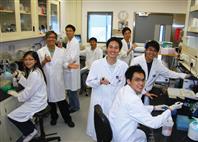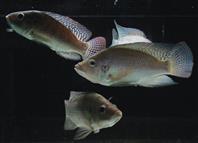Studies on Hong Kong Water Quality Monitoring
You may not know this but Shing Mun River in Sha Tin is inhabited by a great number of African carp, a river fish that hangs out in large schools and grows and breeds rapidly. As Shing Mun River’s water quality is generally considered dubious, anglers are few and far between. The fish were introduced by the government to reservoirs to help get rid of mosquitoes because they have a reputation for eating almost anything and they’re also effective at keeping algae in check.
Director of the Environmental Science Programme at CUHK, Prof. Chan King-ming said that what Hong Kong refers to as African carp is not really carp, but is so named because of its resemblance to the said species. African carp is in fact tilapia and comes from the cichlid family of fishes. They live in brackish water and are commonly found in tropical and subtropical regions all over the world.
Professor Chan explained that tolerance for pollution varies among different species. Some such as salmon cannot live in unclean environments, but African carp is highly tolerant and adaptable. In fish, as in humans, the organ responsible for processing and getting rid of pollutants is the liver. Hence fish with stronger liver function are better at dealing with pollutants, in particular, metals. The African carp has a natural make-up that comes with strong pollutant resistance.
Fish weaker in this department would have trouble surviving in Shing Mun River and made it difficult to collect samples for research. The African carp’s high toxicity tolerance makes it an ideal indicator of the presence of metal pollutants in Shing Mun River. For years, Professor Chan has been using this fish to monitor the river’s water quality. He said, ‘If we want to understand how contaminants affect the ecological system and how chemicals harm human health, we can use biomarkers to assess the potential risks of the contaminants. Otherwise those chemical concentrations in water and sediments are just figures with no real meaning.’ By detecting metal traces in the fish’s livers, he found that the river contains copper, zinc, cadmium, lead, etc., with copper content being the highest. This, he said, is due to soil contamination by the iron mines in Ma On Shan as well as urban pollution.
‘Actually the government has done a lot to clean up Shing Mun River. They removed the sludge and introduced bacteria to decompose organic matter. According to the Drainage Services Department, the river is indeed cleaner, but our observation shows that metals and organic compounds such as dioxin have not been properly dealt with.’
Professor Chan said that chemicals that feature prominently in Hong Kong waters include PBDE (polybrominated diphenyl ethers), an organic compound used as flame retardant which is strictly controlled in the US and the EU, because it is shown to interfere with human hormones. Another chemical is DDT (dichlorodiphenyltrichloroethane), a synthetic pesticide that’s been banned in developed countries, but is still widely used in the developing world as an insecticide. He said these two chemicals are brought here by water in the Pearl River Delta.
Professor Chan said that Hong Kong’s water quality is acceptable because the city’s industrial and agricultural sectors are far from thriving, and on top of that, the government has the right measures in place. The most uncontrolled pollution comes from urban emissions, in particular, waste water released directly into the sea via roadside rainwater drains by eateries, shops, garages and wet markets.
Protein-rich African carp is tasty braised or steamed. But care must be taken to remove the liver and other internal organs before cooking — standard procedure for preparing any fish. Popular in China, Taiwan, and Southeast Asia, it’s one of the world’s main farmed fishes with a production volume of over a million tonnes a year. ‘There are many types of African carp. In Hong Kong alone, you see four or five,’ Professor Chan pointed out. ‘Someone tried to raise African carp using seawater. The result was nice, crunchy flesh and none of the “muddy taste” that Hong Kongers are known to dislike. But it’s not easy to change impressions and tastes, so the fish never made it to the dinner table. In any case, it’s contributing to scientific research and that’s worthwhile.’ 



































































































































































Social Bookmarks